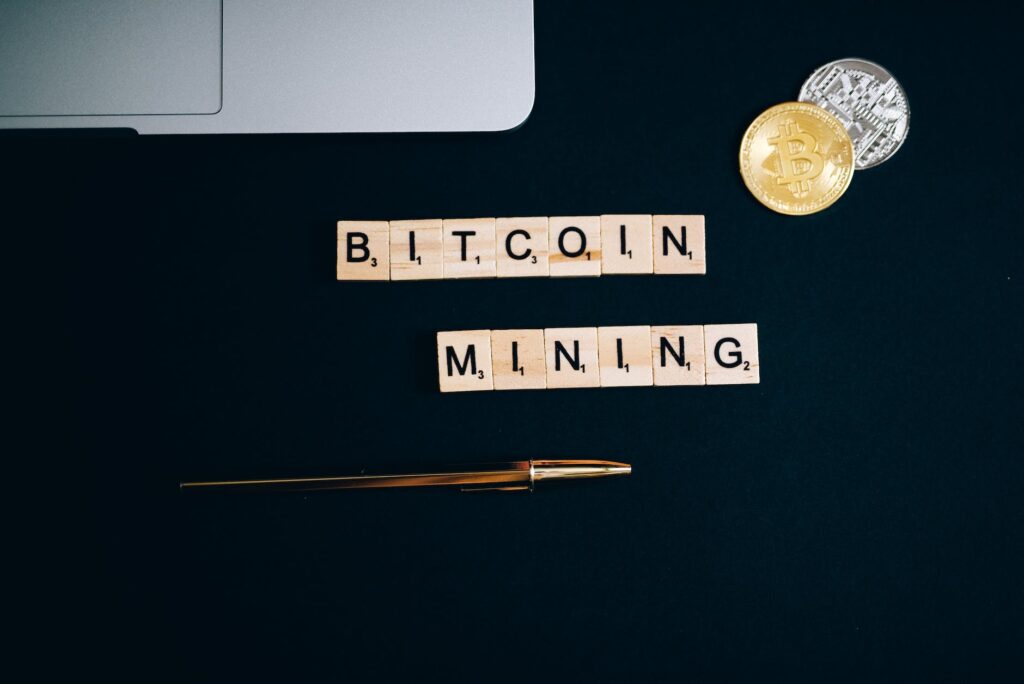The Basics of Bitcoin Mining
To understand the impact of Bitcoin mining difficulty on miners, it is important to grasp the fundamentals of Bitcoin mining and the role miners play in the Bitcoin network.
What is Bitcoin Mining?
Bitcoin mining is the process by which new Bitcoins are generated and transactions are verified on the Bitcoin network. It involves solving complex mathematical problems using specialized hardware and software. Miners compete with each other to solve these mathematical puzzles, and the first miner to find a solution is rewarded with a certain amount of newly minted Bitcoins.
The process of mining serves two primary purposes. Firstly, it ensures the security and integrity of the Bitcoin network by validating and verifying transactions. Secondly, it introduces new Bitcoins into circulation, maintaining a limited and controlled supply of the cryptocurrency.
The Role of Miners in the Bitcoin Network
Miners play a vital role in the Bitcoin network. Their primary responsibility is to validate and confirm the legitimacy of transactions. When a Bitcoin transaction is made, it is broadcasted to the network and included in a pool of unconfirmed transactions, known as the mempool.
Miners then select a set of transactions from the mempool and bundle them together into a block. They employ their computational power to solve the mathematical problem associated with the block. Once a miner successfully solves the problem, they add the block to the blockchain, which is the public ledger that records all Bitcoin transactions.
In addition to validating transactions and adding blocks to the blockchain, miners also secure the network by contributing their computational power. The decentralized nature of Bitcoin relies on miners collectively maintaining the network’s security and preventing fraudulent activities.
As the difficulty of mining increases over time, miners face various challenges and considerations that impact their profitability and operations. Understanding the intricacies of mining difficulty is crucial for miners to adapt and thrive in the ever-evolving landscape of Bitcoin mining.
Understanding Bitcoin Mining Difficulty
To fully comprehend the impact of Bitcoin mining difficulty on miners, it’s crucial to have a clear understanding of what mining difficulty is and how it is calculated. Additionally, it’s important to explore the factors that influence adjustments to mining difficulty.
Definition and Calculation of Mining Difficulty
Bitcoin mining difficulty refers to the measure of how difficult it is to find a new block in the Bitcoin blockchain. It is designed to ensure that blocks are added to the blockchain at a consistent rate, approximately every 10 minutes. The mining difficulty is automatically adjusted by the Bitcoin network every 2016 blocks, or roughly every two weeks.
The calculation of mining difficulty is based on a target value, which is an arbitrary number set by the Bitcoin protocol. Miners must find a hash value that is below this target value to successfully mine a block. If the hash value is higher than the target, the miner must continue searching for a valid hash. The lower the target value, the more difficult it is to find a valid hash.
The Bitcoin mining difficulty is calculated using a formula that takes into account the time it took to mine the previous 2016 blocks. If it took less than two weeks, the difficulty increases, making it harder to find a valid hash. Conversely, if it took longer than two weeks, the difficulty decreases, making it easier to find a valid hash. This adjustment mechanism ensures that the block time remains relatively stable over time.
Factors Influencing Mining Difficulty Adjustments
Several factors influence the adjustments made to Bitcoin mining difficulty. These factors include:
-
Hashing Power: The total computational power dedicated to mining Bitcoin plays a significant role in determining the mining difficulty. As more miners join the network or upgrade their mining equipment, the overall hashing power increases. This, in turn, leads to a higher mining difficulty to maintain the desired block time.
-
Block Time: The time it takes to mine each block directly affects the mining difficulty. If blocks are being mined at a faster rate than the target block time of 10 minutes, the difficulty increases. Conversely, if blocks are being mined too slowly, the difficulty decreases.
-
Mining Efficiency: Advancements in mining hardware technology can significantly impact mining efficiency. More powerful and energy-efficient mining equipment can increase the hashing power while reducing energy consumption. Miners utilizing more efficient equipment may contribute to an increase in the overall network hashing power, leading to a subsequent increase in mining difficulty.
By understanding the definition and calculation of mining difficulty, as well as the factors influencing its adjustments, miners can better comprehend the challenges and opportunities associated with Bitcoin mining. To explore strategies for dealing with mining difficulty and staying competitive in the mining industry, continue reading the next section.
Impact of Mining Difficulty on Miners
As Bitcoin mining difficulty increases, miners face various challenges that impact their profitability and operations. In this section, we will explore the effects of mining difficulty on miners, including increased competition and reduced rewards, mining equipment and energy costs, and the role of mining pools and collective efforts.
Increased Competition and Reduced Rewards
As mining difficulty rises, more miners enter the network, leading to increased competition for block rewards. With a limited number of Bitcoins being generated every 10 minutes, miners need to invest in powerful hardware and efficient mining operations to stay competitive.
The increased competition also leads to a reduction in individual miner rewards. Miners now receive smaller fractions of Bitcoins per block, making it harder to cover their expenses and achieve significant profits. It becomes crucial for miners to carefully consider their mining strategies, including factors like electricity cost, hardware efficiency, and mining pool participation.
Mining Equipment and Energy Costs
The escalating mining difficulty necessitates the use of advanced and specialized mining equipment. Miners must invest in powerful hardware, such as Bitcoin mining hardware, to solve complex mathematical problems and secure block rewards. These machines often come with high price tags, and staying up to date with the latest technology is essential to remain competitive.
Mining also requires a significant amount of energy. As the difficulty increases, miners need more computational power, which translates to higher electricity consumption. The rising energy costs can eat into the potential profits of miners, making efficient energy management and access to affordable electricity crucial considerations.
Mining Pools and Collective Efforts
Mining difficulty has led to the rise of mining pools, where individual miners pool their resources and work together to solve complex mathematical problems. By joining forces, miners increase their chances of successfully mining a block and earning a share of the rewards. Bitcoin mining pools provide a way for miners to mitigate the impact of increasing difficulty and maintain a more consistent income stream.
Pooling resources also allows miners to share the costs of equipment and electricity, making it more affordable to participate in the mining process. However, miners should carefully choose their mining pool, considering factors such as pool fees, reputation, and the pool’s size and distribution.
By collaborating in mining pools and leveraging collective efforts, miners can navigate the challenges posed by rising mining difficulty and increase their chances of success.
Understanding the impact of mining difficulty on miners is crucial for those interested in engaging in Bitcoin mining. It is essential to consider factors such as increased competition and reduced rewards, mining equipment and energy costs, and the benefits of participating in mining pools. By staying informed and adapting their strategies to the changing landscape, miners can optimize their operations and maximize their chances of profitability in the Bitcoin mining ecosystem.
Strategies for Dealing with Mining Difficulty
Bitcoin mining difficulty can pose challenges for miners as it increases over time. However, there are several strategies that miners can employ to navigate these difficulties and continue to participate in the mining process. Let’s explore three effective strategies: upgrading mining equipment, joining mining pools, and exploring alternative cryptocurrencies.
Upgrading Mining Equipment
As mining difficulty increases, it becomes essential for miners to stay competitive by upgrading their mining equipment. Newer and more efficient hardware can provide higher hash rates, allowing miners to solve complex mathematical problems more quickly. This, in turn, increases their chances of successfully mining new blocks and earning rewards.
Miners should regularly assess the market for the latest bitcoin mining hardware to identify models that offer improved performance and energy efficiency. Upgrading equipment can help miners maintain profitability and offset the challenges posed by rising mining difficulty.
Joining Mining Pools
Another effective strategy for dealing with mining difficulty is to join a mining pool. Mining pools allow individual miners to combine their computing power and collectively mine blocks. By pooling resources, miners can increase their chances of successfully mining new blocks and earning rewards, even in the face of high mining difficulty.
Joining a mining pool provides miners with a more consistent and predictable income stream, as the rewards are distributed among participants based on their contributions. This approach can help mitigate the impact of mining difficulty fluctuations and provide a more stable income. To learn more about mining pools, check out our article on bitcoin mining pools.
Exploring Alternative Cryptocurrencies
In some cases, miners may find it beneficial to explore alternative cryptocurrencies to mine. While bitcoin remains the most well-known and widely mined cryptocurrency, there are numerous other cryptocurrencies available. Some of these cryptocurrencies may have lower mining difficulty levels, making them more accessible and potentially more profitable for miners.
Miners should research and assess the mining difficulty, market value, and potential future prospects of alternative cryptocurrencies. By diversifying their mining activities, miners can adapt to changing market conditions and potentially find more lucrative opportunities. However, it’s important to note that mining alternative cryptocurrencies may involve different technical requirements and considerations.
By employing these strategies, miners can effectively navigate the challenges posed by increasing mining difficulty. Upgrading mining equipment, joining mining pools, and exploring alternative cryptocurrencies are all viable options for miners to maintain their participation in the mining process and continue to earn rewards. It’s crucial for miners to stay informed about the latest developments in the industry and adapt their strategies accordingly to optimize their mining endeavors.
The Future of Bitcoin Mining Difficulty
As the world of Bitcoin mining continues to evolve, it is essential to consider the future trends and challenges that miners may face. Additionally, exploring innovations and solutions in mining technology can provide insights into the potential advancements and improvements in the industry.
Projected Trends and Challenges
The future of Bitcoin mining difficulty is likely to be influenced by several key trends and challenges. One significant trend is the increasing competition among miners. As more individuals and organizations enter the mining space, the overall mining difficulty is expected to rise. This can result in reduced rewards for individual miners, making it more challenging to generate profits. To stay competitive, miners may need to invest in more powerful mining equipment and optimize their operations.
Another challenge that miners may face in the future is the rising energy costs associated with mining. Bitcoin mining requires substantial computational power, which consumes a significant amount of electricity. As energy costs fluctuate and environmental concerns around energy consumption grow, miners may need to find innovative ways to reduce their energy usage or explore alternative energy sources.
Additionally, regulatory changes and government interventions may impact the future of Bitcoin mining. As governments worldwide develop regulations for cryptocurrencies, miners may need to navigate legal requirements, taxation policies, and licensing procedures. Adapting to these evolving regulatory landscapes will be crucial for miners to ensure compliance and mitigate potential risks.
Innovations and Solutions in Mining Technology
Innovations in mining technology offer potential solutions to address the challenges faced by miners. One area of innovation is the development of more efficient mining hardware. Manufacturers are continuously improving the performance and energy efficiency of mining rigs, allowing miners to achieve higher hash rates while consuming less power. Upgrading to more advanced hardware can lead to increased mining profitability and a more sustainable mining operation.
Furthermore, the emergence of mining pools has become a popular strategy for miners to combine their resources and increase their chances of earning rewards. By pooling their hashing power, miners can collectively solve blocks more frequently, resulting in more consistent earnings. Joining a mining pool can be especially beneficial for individual miners with limited resources.
Another potential solution is the exploration of alternative cryptocurrencies. While Bitcoin remains the most prominent and widely recognized cryptocurrency, other cryptocurrencies may offer more favorable mining conditions. Miners can diversify their mining efforts by exploring alternative cryptocurrencies that have lower mining difficulty levels or unique features that align with their mining capabilities and goals.
As the future unfolds, advancements in technology and the continued development of the cryptocurrency ecosystem will shape the landscape of Bitcoin mining difficulty. Miners must stay informed about projected trends, adapt to evolving challenges, and embrace innovative solutions to thrive in this dynamic industry. For those interested in getting started with Bitcoin mining or learning more about the intricacies of the process, check out our article on how to start bitcoin mining and bitcoin mining explained.






